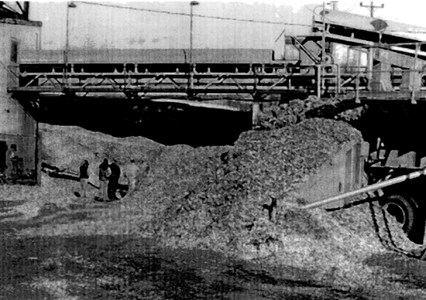


Wood chips stacked outside the Burlington Electrical Department in
Burlington, Vermont, illustrate the use of biomass energy crops in generating
electricity.

Is the potential for biomass energy crop displacement of fossil fuels large enough to significantly contribute to the mitigation of CO2 buildup in the United States?

Estimates of the land base available for biomass energy crops range greatly depending on assumptions about crop types, genetic improvements, agricultural policy, and food production needs.
Even a low land availability such as 35 million acres could result in mitigating about 6% of the fossil carbon emitted in the United States.
Generation of electricity from energy crops will mitigate more carbon than will production of liquid fuels.

Graham, R. L., L. L. Wright, and A. F. Turhollow. 1993. Short rotation woody crops: Opportunities to mitigate atmospheric carbon dioxide buildup. Climate Change 22:223- 238.
Integrated Assessment Briefs. 1995. ORNL/M-4227. Oak Ridge National Laboratory, Oak Ridge, TN.